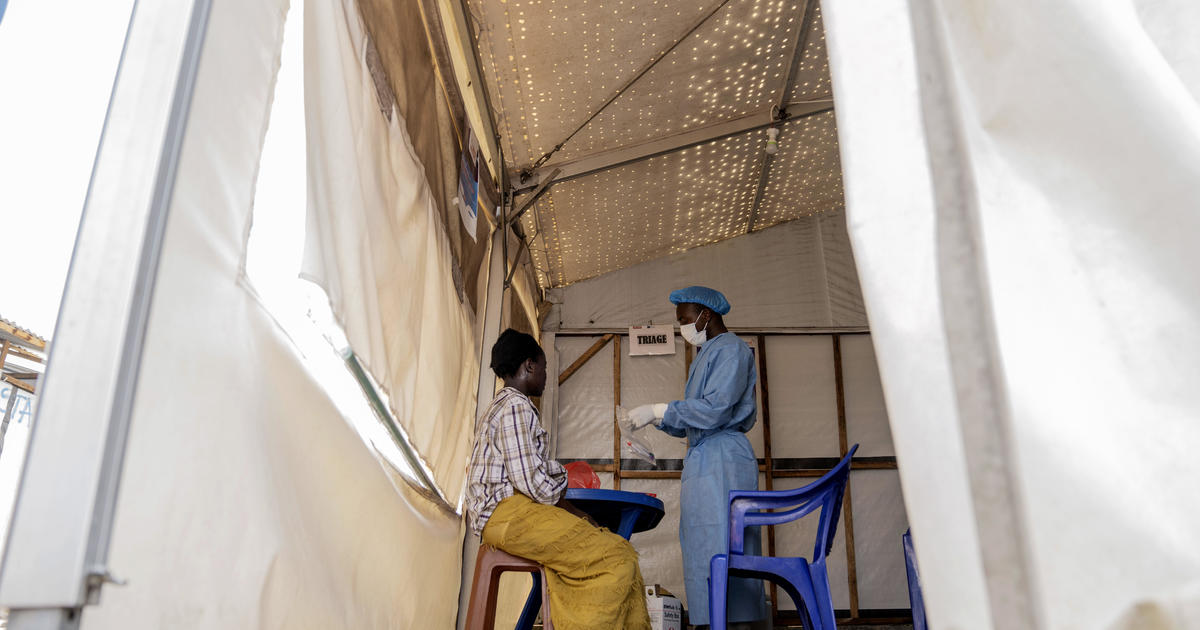The Democratic Republic of Congo (DRC) has initiated a vaccination campaign against mpox, a significant step in combating a persistent outbreak that has disproportionately affected the nation. The rollout, using doses donated by the European Union and the United States, marks a crucial intervention in a country already grappling with a fragile healthcare system and widespread conflict. The vaccination campaign comes nearly two months after the World Health Organization declared the mpox outbreak a global emergency. While the initial phase targets adults and frontline workers, plans are underway to vaccinate children as well, addressing a significant portion of the population most vulnerable to the disease’s severe effects. The complexities of the situation, including limited resources and widespread conflict, highlight the challenges faced in containing this serious health crisis.
Mpox Outbreak in the DRC: A Critical Situation
The Scale of the Problem
The DRC bears the brunt of the current mpox outbreak in Africa, accounting for over 80% of reported cases and a staggering 99% of deaths. With approximately 30,000 suspected cases and 859 fatalities, the scale of the crisis underscores the urgency of the vaccination campaign. The virus has spread across all 26 provinces of the country, exposing a vast and vulnerable population to infection. This extensive spread is partly attributed to the existing weaknesses in the healthcare system, struggling to cope with limited resources and the added strain of managing a large-scale outbreak. Existing challenges in diagnosis and the provision of basic care further exacerbate the issue. Stigma associated with the virus also creates additional barriers in effective response and management.
Challenges Faced in Managing the Outbreak
The DRC’s fight against mpox is compounded by several factors. The country’s already strained healthcare system, hampered by under-resourcing, is ill-equipped to handle an outbreak of this magnitude. The challenge is further complicated by the geographic expanse of the country, making the delivery of essential services and medical supplies an enormous logistical challenge. The ongoing conflicts and widespread displacement further hinder effective disease control, as exemplified by the high-risk situation in North Kivu, where camps for displaced people are particularly vulnerable to the virus’s spread. Access to essential diagnostics, medicines, and vaccines remain severely limited and insufficient for the scale of the need.
The Vaccination Campaign: A Ray of Hope
Initial Rollout and Target Groups
The initial vaccination campaign focused on adults, prioritizing at-risk populations and frontline healthcare workers. This targeted approach aims to maximize the immediate impact of available vaccines, protecting those most exposed to the virus. 265,000 doses, a donation from the EU and US, initiated the program in Goma, North Kivu province—a region significantly affected by the outbreak. This strategic deployment emphasizes the need for effective vaccine distribution and prioritization. This rollout serves as an initial stage; with additional supplies expected, it is intended as a foundational step in a broader and more comprehensive campaign.
Future Plans and Challenges
While the initial rollout provided much-needed relief, the scale of the outbreak demands a broader strategy. Further shipments of vaccines, including doses suitable for children (at least 3 million expected from Japan), are essential to address the high proportion of child cases. Ensuring equitable access to these vaccines across the country, especially in conflict-affected regions, will present ongoing logistic and resource challenges that must be actively addressed. Beyond vaccination, strengthening surveillance, improving diagnosis capabilities, providing treatment options and promoting effective public health messaging are also crucial aspects to combat this devastating outbreak effectively.
Addressing Underlying Factors: Conflict and Health Infrastructure
The Impact of Conflict
Eastern Congo’s protracted conflict adds another layer of complexity. The presence of numerous armed groups, fighting for control of resources in the mineral-rich region, disrupts healthcare services, hampers access to resources and affects community engagement in response programs. The displacement of populations, due to the conflict, increases exposure to mpox as hygiene conditions and living conditions in displacement camps make people more susceptible. Securing access and ensuring safety for healthcare providers is also a continuous and paramount concern.
Strengthening Health Systems
Beyond the immediate response to the mpox outbreak, long-term solutions require bolstering the DRC’s healthcare infrastructure and capacity. Strengthening healthcare systems, including improving diagnosis, access to treatment, staff training and provision of appropriate medical equipment is critical. Investment in improving the availability of vaccines for other preventable diseases can better equip the country in confronting future health emergencies, reducing its susceptibility to wider outbreaks and making its system more robust and responsive. It’s vital that such strategies go hand-in-hand with ongoing efforts to improve overall public health and sanitation in these precarious areas.
Takeaway Points:
- The mpox outbreak in the DRC represents a major public health crisis, exacerbated by pre-existing vulnerabilities in the healthcare system and ongoing conflict.
- The vaccination campaign offers critical support, but a multi-pronged approach is necessary.
- Addressing underlying factors such as conflict, poverty and limited access to healthcare is vital for long-term success.
- International collaboration and sustained investment are crucial for supporting the DRC’s efforts to control the outbreak and prevent future emergencies.




